North America

Prior to European contact, copper, turquoise, shell, and bone were fashioned into jewelry—bracelets, armbands, pectorals, necklaces, and earrings. These items and the materials from which they were made, were highly valued and were often traded over vast distances. After contact, Native peoples learned how to work silver and inlay precious stones, developing new styles of jewelry both for internal use and for sale. In the Southwest, Navajo and Pueblo peoples made silver squash blossom necklaces, bracelets and rings featuring turquoise, coral and jet, and necklaces from melon and olive shell heishi. In the Northwest Coast, dentalium shells were traditionally used and continue to be fashioned into necklaces and earrings. In the mid eighteenth-century Russian traders introduced glass trade beads and Northwest Coast artists decorated silver jewelry with crest and clan designs, mirroring the elaborate decorative traditions of the region.
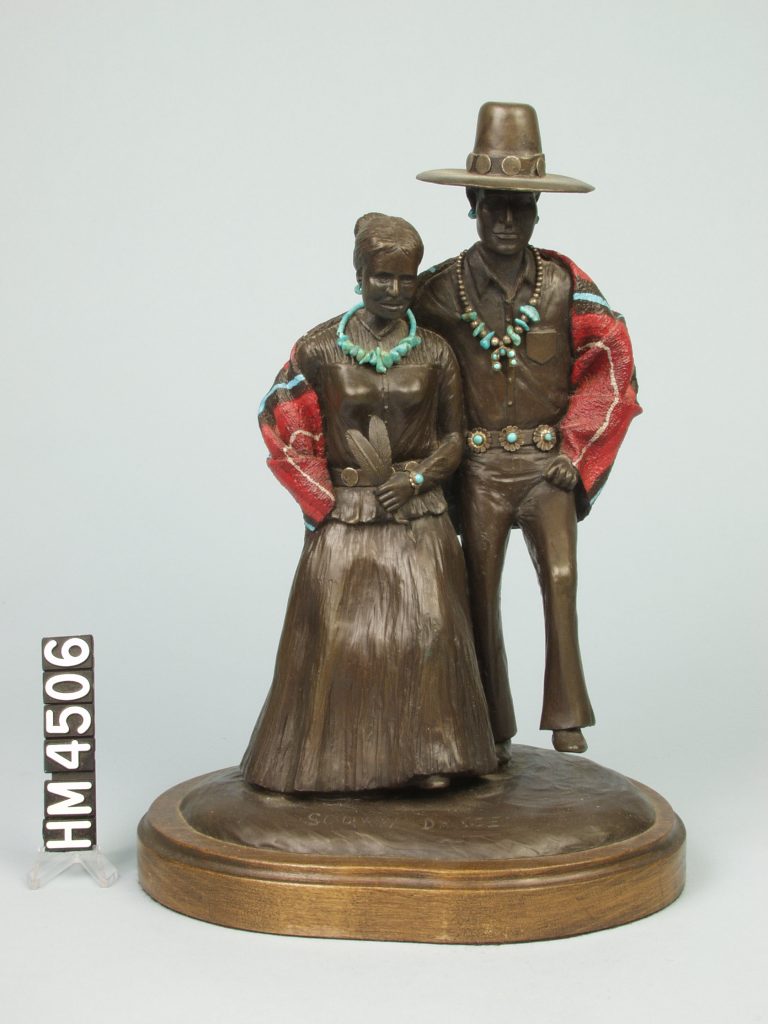
Navajo Couple by Ray Tidd (1918-1990)
c. 1983
Donated by Ellen Mickiewicz in memory of Ralph and Dorothy Wollheim
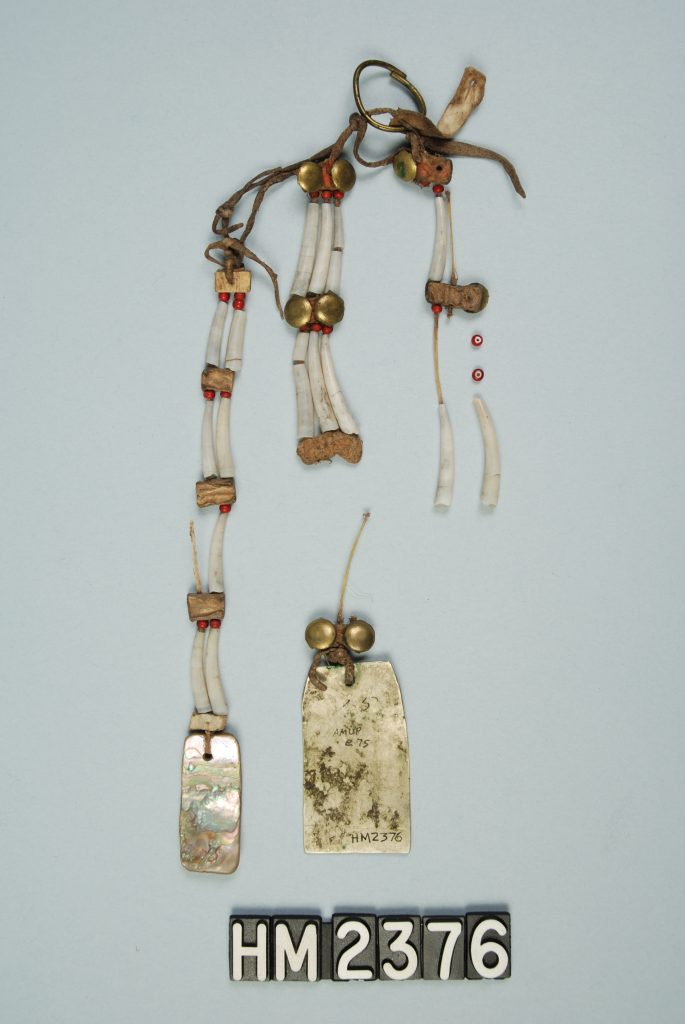
Cheyenne Man’s Earring
c.1870
This Plains dangle earring includes German Silver, Cornaline d’Aleppo beads, brass tacks and dentalia and abalone shell from the Northwest Coast.
Ex. Portland Society of Natural History
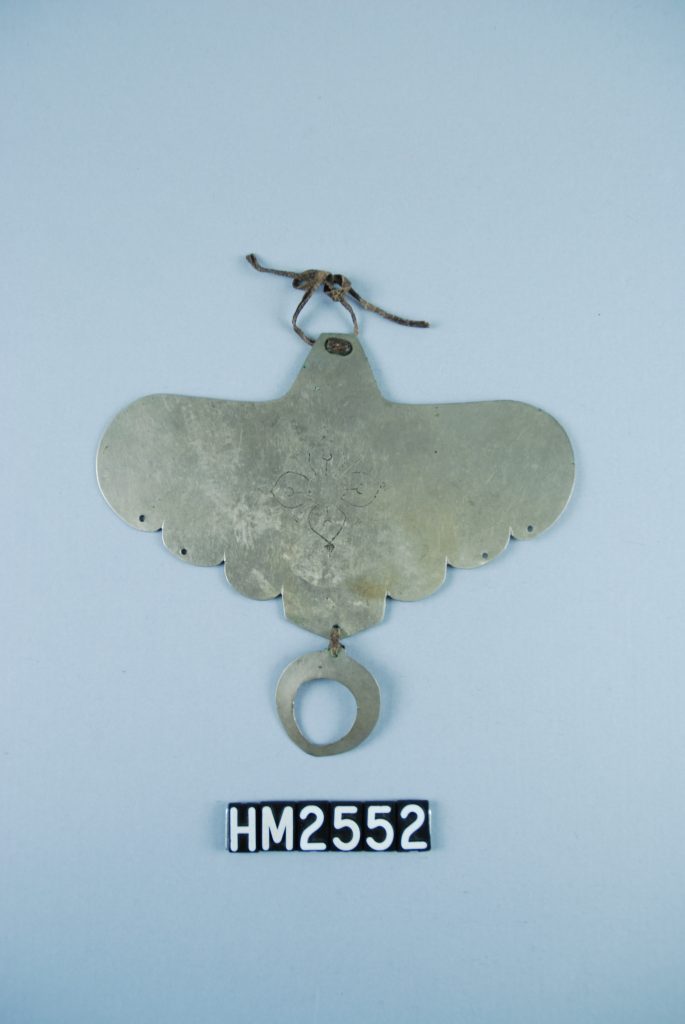
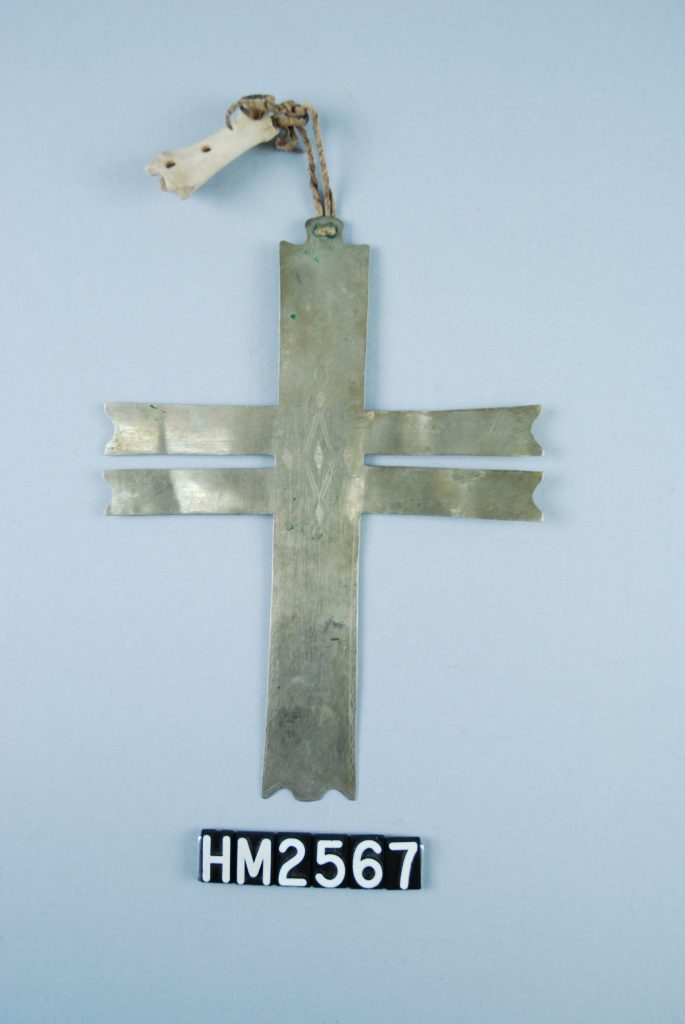
Cheyenne German Silver Dragonfly Cross
c. 1870
The cross has a talisman attached to it–a piece from a ring and pin game. The game consists of a string of deer phalanges (toe bones found
above the hoof). The bones are pierced and are “speared” with a metal pin.
Ex. Portland Society of Natural History
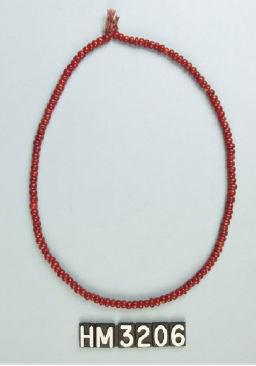
Trade Bead Necklace
c. 1880
Europeans exchanged trade beads with Indigenous peoples around the world. The red beads are Cornaline d’Aleppo–white heart or Hudson’s Bay beads which were exchanged for furs in North America.
William P. Palmer, III Collection
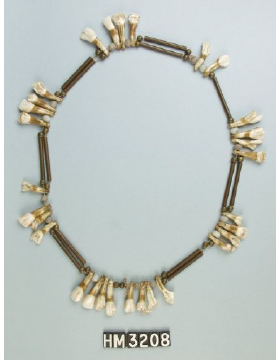
Tlingit Necklace
c. 1880
This necklace features elk incisors, copper beads and tubes, and glass trade beads.
William P. Palmer, III Collection
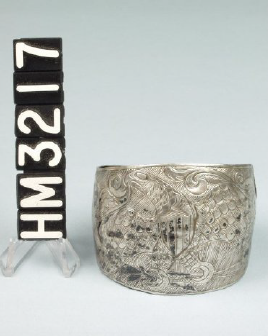
Haida Silver Eagle Bracelet
c. 1900
The eagle is not rendered using the design rules of Northwest Coast art, but rather in the style of the Great Seal of the United States.
William P. Palmer, III Collection
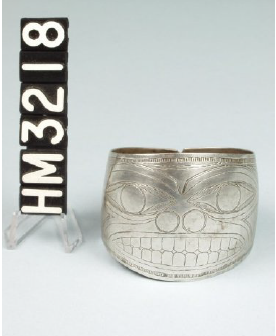
Makah Silver Bracelet
c. 1900
This bracelet was acquired in Neah Bay, Washington State.
William P. Palmer, III Collection
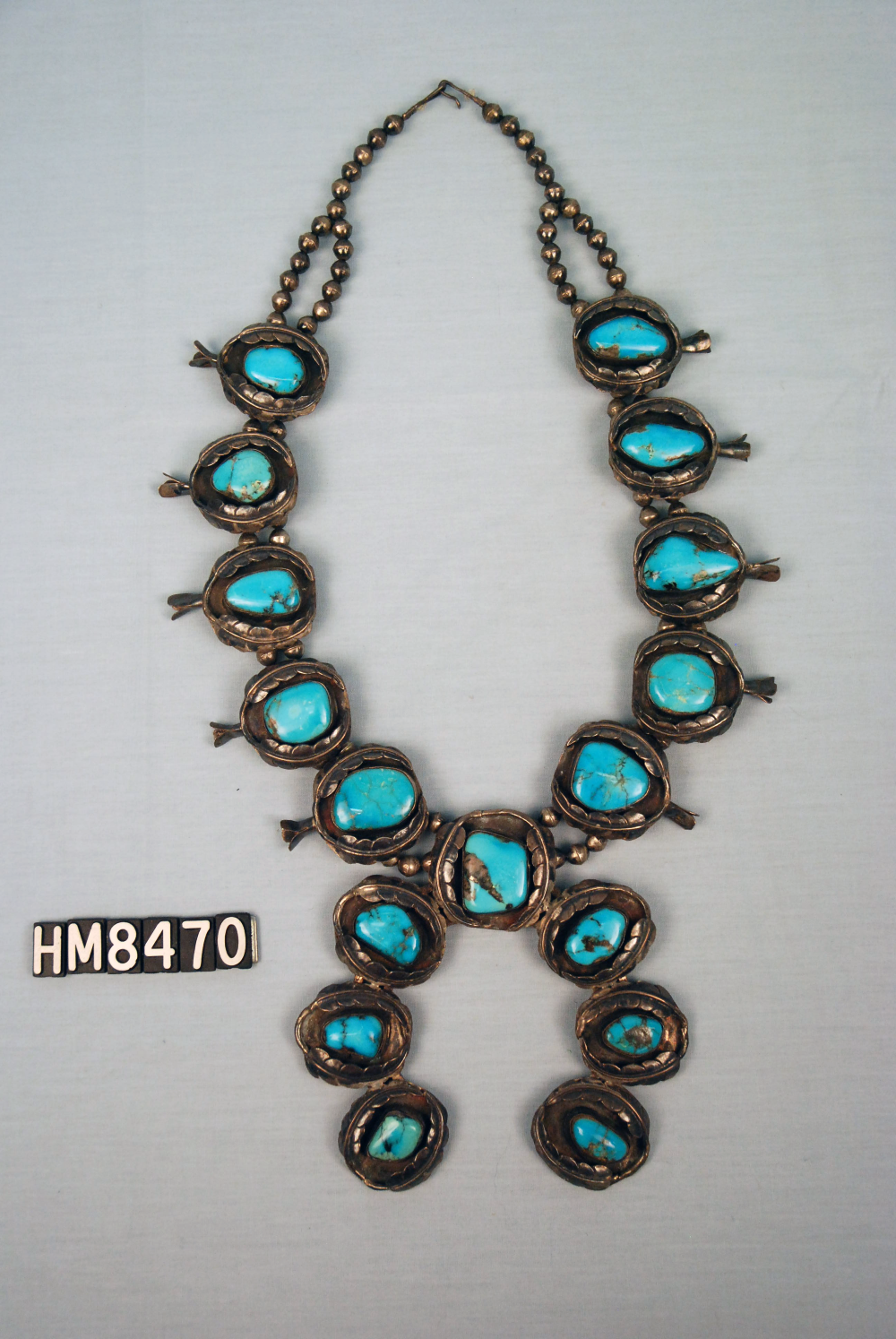
Navajo Squash Blossom Necklace
c. 1960
This traditional style necklace features Kingman turquoise.
Dennis & Margaret Spinner Collection
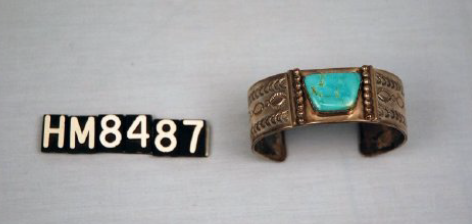
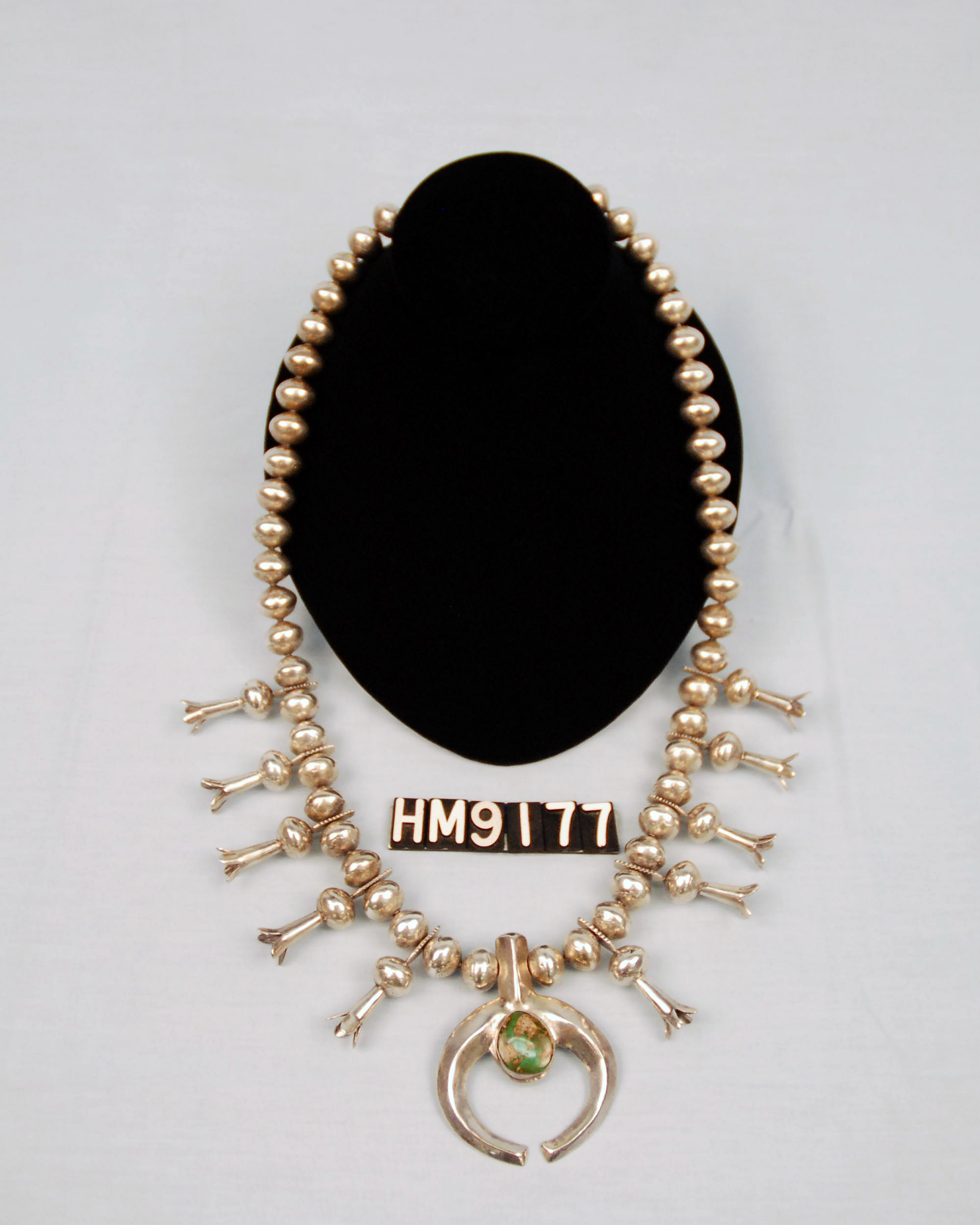
Navajo Squash Blossom Necklace
c. 1940
This necklace features Mercury dimes—a practice that was common during the 1940s when silver was rationed during World War II.
Frances Robinson Mitchell Collection
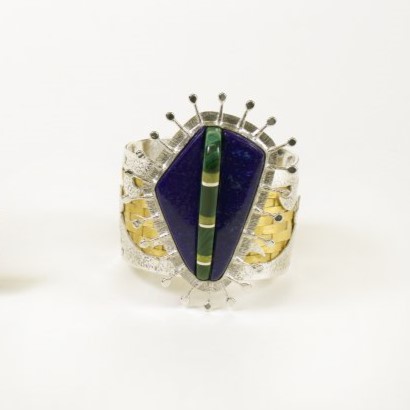
Penobscot Medicine Cuff
2021
By Jason Brown, Penobscot
“Created in .935 Argentium silver, 24kt gold, brown ash, lapis, malachite and green opal, this cuff is a visual representation of healing. The leaf, inlaid in malachite, Argentium silver and green opal is seen floating in the water, represented by lapis. Both plants and water are held in high regard amongst Wabanaki people for their healing energies and necessity for life as we know it. The setting that holds the stones takes its inspiration from traditional Wabanaki design patterns. The foundation for this piece is the cuff which is cut with stylized Wabanaki designs and set with 24kt gold gilded brown ash which has been hand woven. The use of ash is important as it is the tree the Wabanaki were created from. The use of gold not only adds beauty as a metal but is symbolic of our connection to the stars and creation as all gold found on Earth came here from distant galaxies.”
– Jason Brown
Acquisition supported by Bangor Savings Bank Wabanaki Art Acquisition Fund


